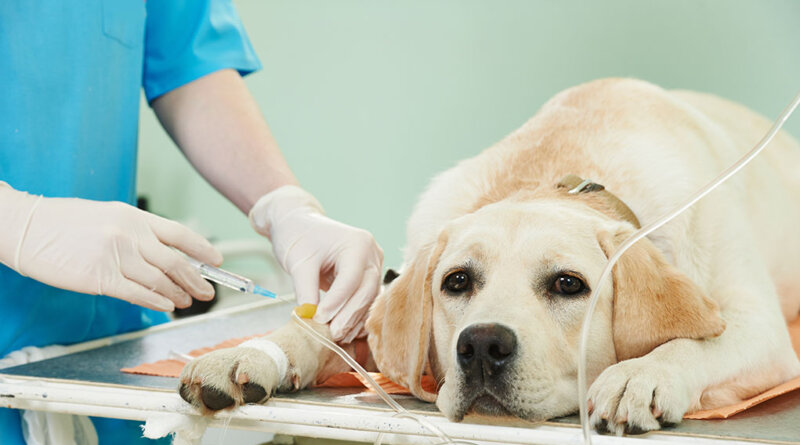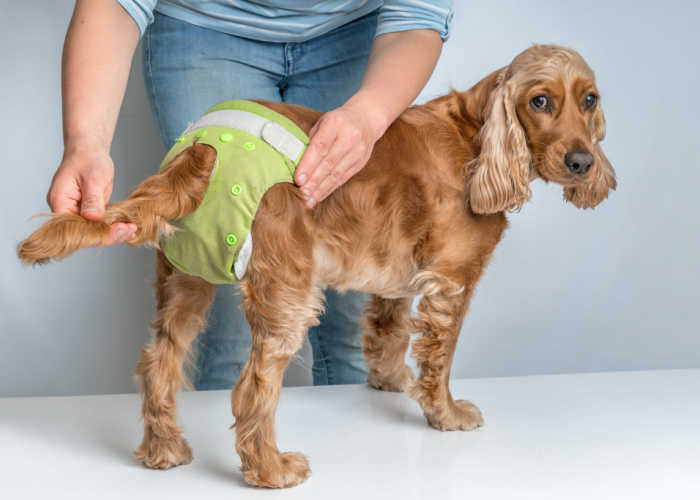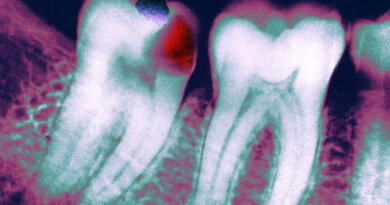Tumors Of The Vagina In Dogs – Top Dog Tips
In this article, we’ll discuss everything that you’ll need to know about tumors of the vagina in dogs.
Have you noticed that your dog has been licking her vulva often? Or maybe she’s been frequently urinating?
These are just a few signs of vaginal and vulvar tumors in dogs.
If you’re suspecting that you’re dog has been feeling unwell and may show some of the symptoms below, it is best advised to contact your vet immediately.
Below, we’ll tackle the signs, causes, treatment, and more of vaginal tumors in dogs.
Scroll down to find out more!
Tumors of the Vagina in Dogs
Vaginal and vulvar tumors in dogs are the second most common canine female reproductive tumor after those of the mammary gland. Also, they constitute 2.4% to 3% of canine neoplasia.
If you’re still unsure whether your dog needs to be spayed, well, unspayed dogs are more prone to develop these tumors.
Unspayed, nulliparous (dogs that have never given birth before) dogs that are between the ages of 2 and 18 are more prone to these tumors.
Younger dogs, ages between 1 to 8 years are more prone to lipomas.
Tumors of the vagina in dogs can either be benign or malignant. Moreover, vaginal tumors are non-cancerous and develop from smooth muscle tissues.
These are muscles that are found in the arteries, veins, bladder, and uterus.
Types of Tumors that can Affect the Vagina and Vulvar
Two of the most common tumors that affect the vagina of dogs are Leiomyomas and Fibropapillomas.
Leiomyomas
Furthermore, let’s look into one benign vaginal tumor such as Leiomyomas.
This type of tumor usually starts at the vestibule of the vulva. They exhibit themselves as both extraluminal and intraluminal forms.
Their difference is that extraluminal ones are slow growing and appear gray, white, or tan.
On the other hand, intraluminal tumors are found on the vaginal wall. They are firm and egg-shaped.
Fibropapillomas
There is also another type of tumor Fibropapillomas. It is small, warty bumps that are caused by a viral infection.
They tend to look a lot like other tumors in this area. But they usually return after a few months.
A few more examples of reported non-malignant vaginal and vulvar tumors are:
- Fibromas
- Polyps
- Lipomas
- Sebaceous adenomas
- Fibrous histiocytomas
- Benign melanomas
However, that doesn’t mean that no malignant cancers can develop on the skin of the dog’s vagina.
That’s why you should contact your dog as soon as you see signs of tumors in its vagina.
Moreover, there are also canine transmissible venereal tumors (TMTs) that you should look out for.
These are the type of tumors that can be spread from dog to dog by touch, which can be formed in their reproductive area as well.
Symptoms of Vaginal and Vulvar Tumors
Furthermore, let’s now discuss the signs of vaginal and vulvar tumors in dogs. As dog owners, we must monitor and check on their health.
If you see any of the signs below, make sure to contact your vet immediately. Symptoms of vaginal tumors are:
- Vulvar bleeding or Discharge
- Enlarged Vulvar Mass
- Painful Urination
- Straining to urinate
- Blood in the Urine
- Difficulties in Defecating
- Excessive Vulvar Licking
- Difficulties in childbirth or labor
- Vaginal odor
- Mass on the vagina
Tumors of the Vagina in Dogs: Diagnosis
Firstly, your veterinarian will need a copy of your dog’s full medical history.
Then the vet will start to perform a physical examination including a close look at the tumors and the area surrounding.
The vet will need a blood chemical profile, a complete blood count, a urinalysis, and an electrolyte panel.
Next, the vet will perform a vaginoscopy.
A vaginoscopy is a diagnostic procedure for assessing the nature and extent of disease in the vestibule and vagina area of female dogs.
In this method, there will be a camera attached to a tiny instrument that will go inside the vagina for further inspection. It is also capable of cutting and collecting tissue for biopsy.
Biopsy, partnered with a cytologic examination, can help determine the vaginal tumor’s cell type.
To check if it has spread, a chest x-ray should be conducted. Abdominal x-rays can also show the tumor.
If you have the budget, you can also resort to Magnetic Resonance Imaging (MRI). An MRI can help visualize and outline an image of a tumor.
This can allow the vet to know the surgical feasibility and evaluate the possible degree of cancerous spread.
Treatment of Vaginal and Vulvar Tumors
Once your dog gets diagnosed with a vaginal tumor, the usual treatment is ovariohysterectomy (spaying) and the removal of the tumor itself.
Generally, the removal of the uterus and ovaries reduces the risks of more tumors forming.
It will also allow further examination of the abdominal organs to check for metastasis.
Surgical removal of the tumor plus ovariohysterectomy will result in the complete remission of the benign tumors.
Tumors found on the vaginal wall can be removed by transfixing sutures in the pedicle.
However, there are times when ovariohysterectomy becomes difficult because of the poor visibility of the pedicle. In these cases, a dorsal episiotomy is necessary.
A dorsal episiotomy is a surgical cut made from the vaginal opening up the perineum that can assist with childbirth.
It can also help with the surgical removal of extraluminal tumors.
Unfortunately, there are difficulties in removing primary tumors and secondary tumors. When this happens, your vet will most likely recommend radiation therapy.
In some cases, the needed treatment for malignant tumors is a complete vulvovaginectomy or perineal urethrostomy.
Radiation and chemotherapy are also advised to destroy any new or hidden cancer cells to help prevent a recurrence.
Recovery of Tumors of the Vagina in Dogs
Chemotherapy and follow-up appointments will be needed after the surgery. X-rays can be done as often as every three months if the tumor was cancerous.
Fortunately, dogs are usually sent home the same day after their chemotherapy.
But due to chemotherapy, your vets will also want to do checkups for your dog’s liver and kidney enzyme levels.
Generally, the prognosis for benign vaginal and vulvar tumors is good.
But dogs that have malignant tumors such as adenocarcinomas and squamous cell carcinomas should be carefully monitored.
Frequently Asked Questions
What is the most common tumor in the female dog?
The most common tumor that is diagnosed in female dogs is Mammary Tumor.
Mammary tumors are lumps in the mammary tissue. It is often found in unspayed dogs and dogs spayed after their first heat cycle.
Dog breeds such as toy and miniature poodles, Spaniels, and German Shepherds are prone to this tumor.
How do you tell if a mass on a dog is cancerous?
Your vet will be the one to tell if the mass on a dog is cancerous. But a few symptoms that the mass on your dog is malignant are:
- Large lumps
- Lumps changes size, color, and texture
- Discharge from the lump, nose, or eyes
- Weight Loss
- Sores and Wounds that don’t heal
- Vomiting
- Diarrhea
- Lethargy
What kind of tumors grows fast in dogs?
One tumor that grows fast in dogs is the mast cell tumor. Higher grades of this tumor can have rapid growth and spread. It is also often red and itchy.
Dog breeds that are prone to mast cell tumors are short-faced dogs. For instance, it is often seen in dog breeds like Pugs, French Bulldogs, Boxers, and Shar-Peis.
Tumors Of The Vagina In Dogs: Summary
Tumors of the vagina in dogs are the second most common reproductive tumor in dogs.
Unspayed dogs are more susceptible to these kinds of tumors and other fatal infections.
Vaginal and vulvar tumors, depending on the type, can either be benign or malignant.
When it comes to tumors, it is best to notice them early. Once you’ve seen the symptoms above, contact your most trusted vet immediately.
If your pup has been diagnosed with vaginal tumors, the treatment of choice is the surgical removal of the tumor and spaying of the dog.
When it comes to dealing with their recovery, it is best advised to use gloves and maintain good hand-washing hygiene.
As pet owners, we must monitor our dogs. We know them better than anyone.
If you see them acting weird or lethargic, try and contact your vet for further examinations.
They are truly man’s best friends and they deserve to live a long and happy life.
RELATED: LIPOSARCOMA IN DOGS: SIGNS, TREATMENT, AND PROGNOSIS
Related







